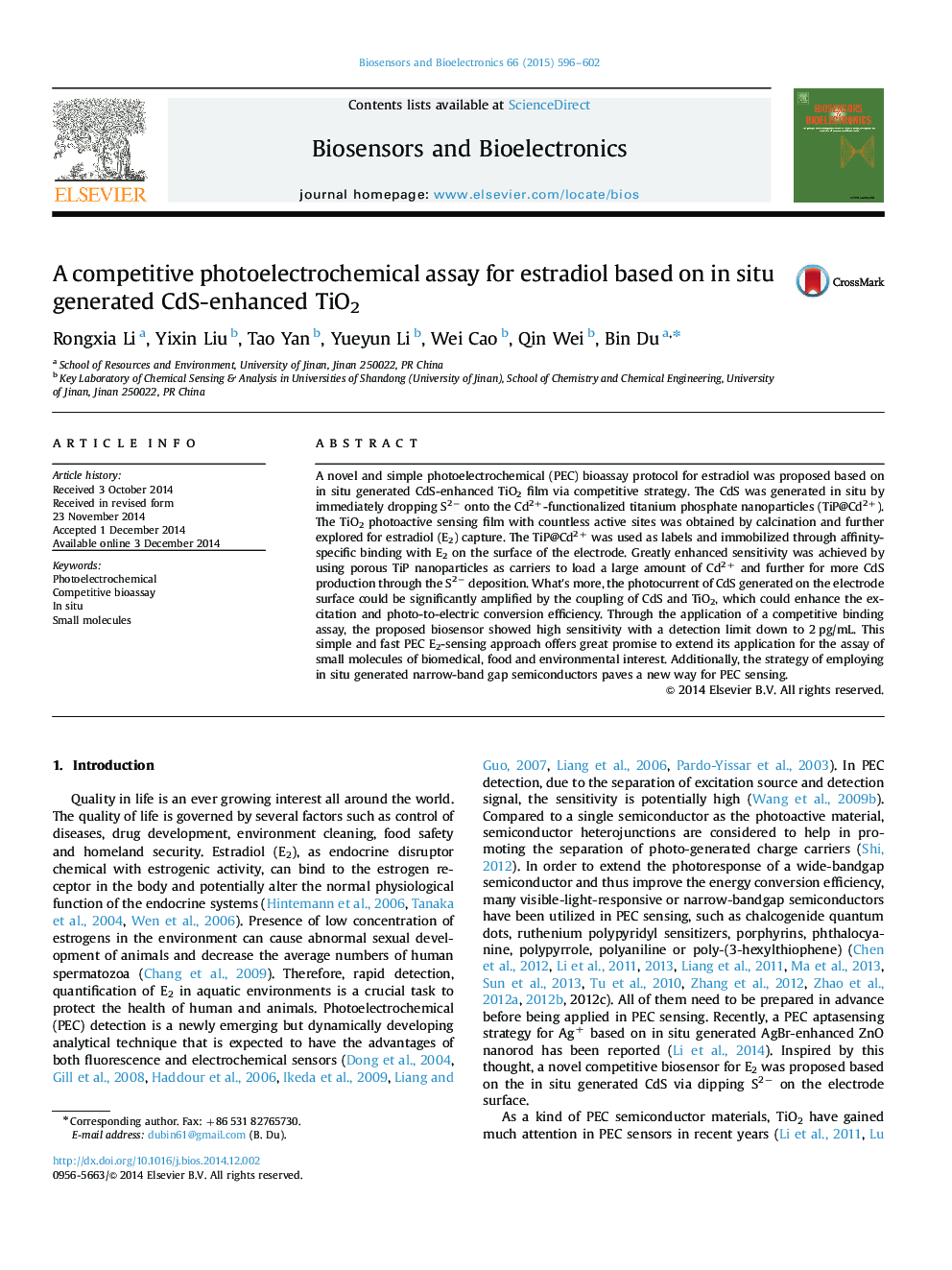| Article ID | Journal | Published Year | Pages | File Type |
|---|---|---|---|---|
| 7232859 | Biosensors and Bioelectronics | 2015 | 7 Pages |
Abstract
A novel and simple photoelectrochemical (PEC) bioassay protocol for estradiol was proposed based on in situ generated CdS-enhanced TiO2 film via competitive strategy. The CdS was generated in situ by immediately dropping S2â onto the Cd2+-functionalized titanium phosphate nanoparticles (TiP@Cd2+). The TiO2 photoactive sensing film with countless active sites was obtained by calcination and further explored for estradiol (E2) capture. The TiP@Cd2+ was used as labels and immobilized through affinity-specific binding with E2 on the surface of the electrode. Greatly enhanced sensitivity was achieved by using porous TiP nanoparticles as carriers to load a large amount of Cd2+ and further for more CdS production through the S2â deposition. What's more, the photocurrent of CdS generated on the electrode surface could be significantly amplified by the coupling of CdS and TiO2, which could enhance the excitation and photo-to-electric conversion efficiency. Through the application of a competitive binding assay, the proposed biosensor showed high sensitivity with a detection limit down to 2Â pg/mL. This simple and fast PEC E2-sensing approach offers great promise to extend its application for the assay of small molecules of biomedical, food and environmental interest. Additionally, the strategy of employing in situ generated narrow-band gap semiconductors paves a new way for PEC sensing.
Related Topics
Physical Sciences and Engineering
Chemistry
Analytical Chemistry
Authors
Rongxia Li, Yixin Liu, Tao Yan, Yueyun Li, Wei Cao, Qin Wei, Bin Du,
